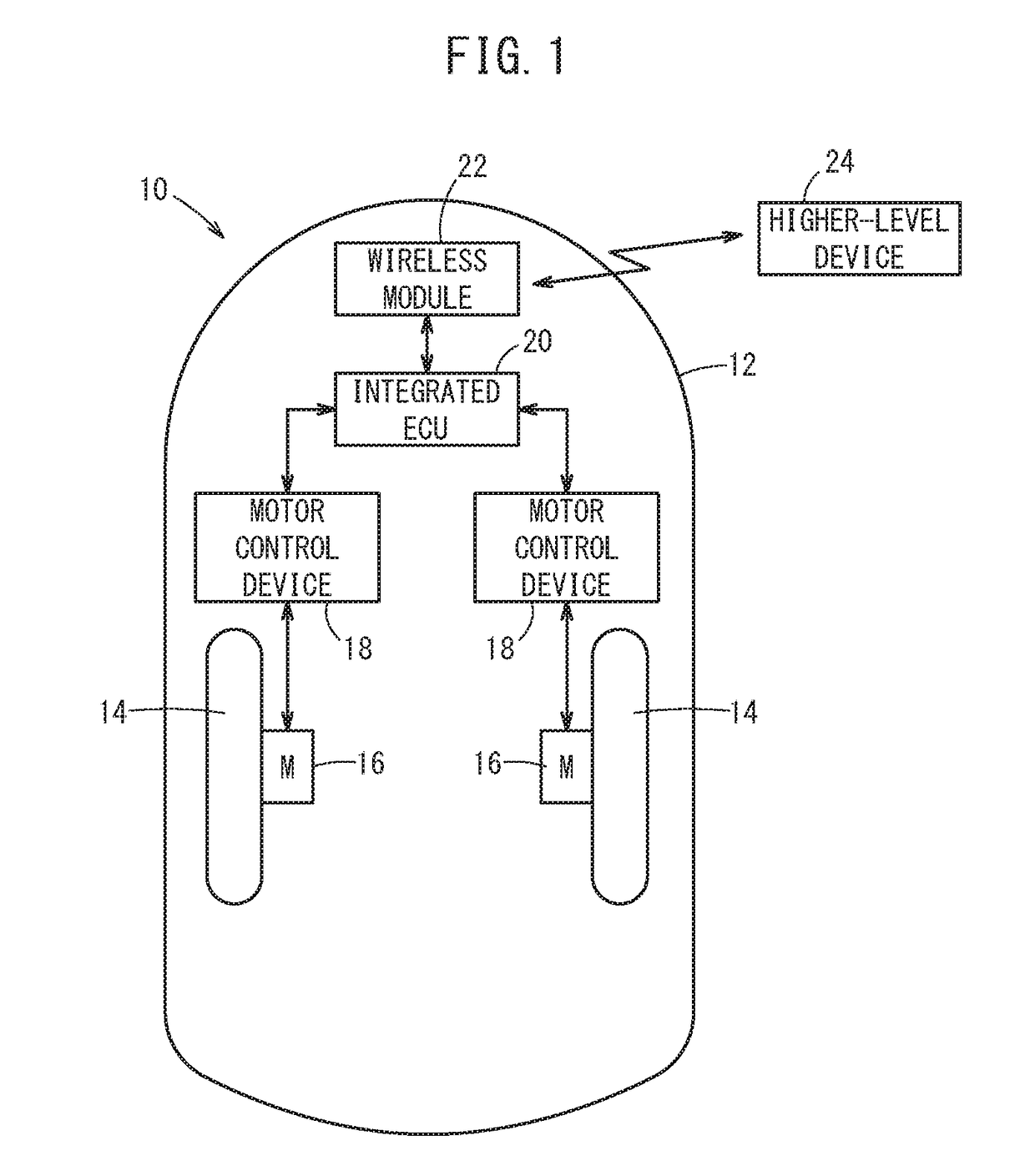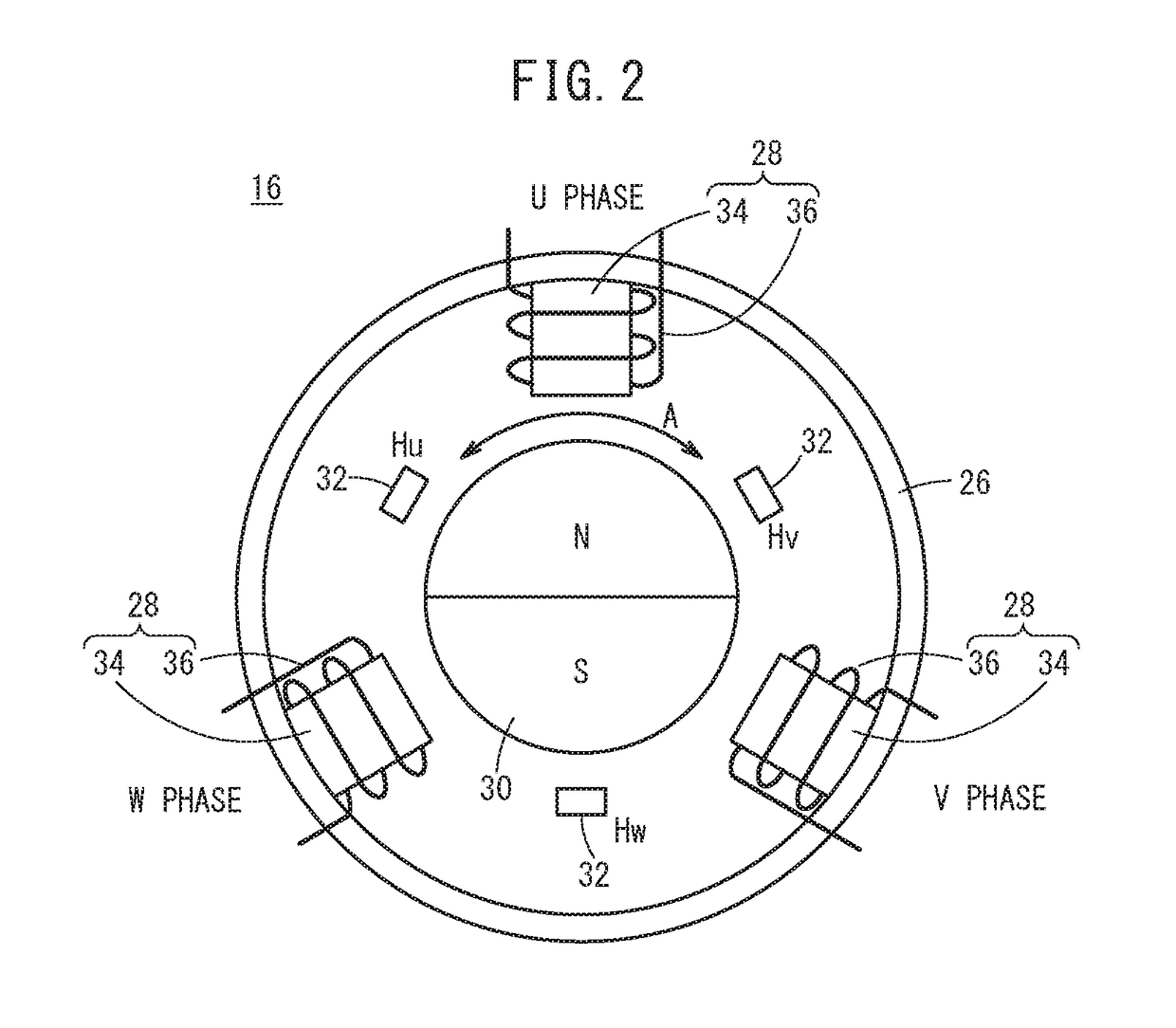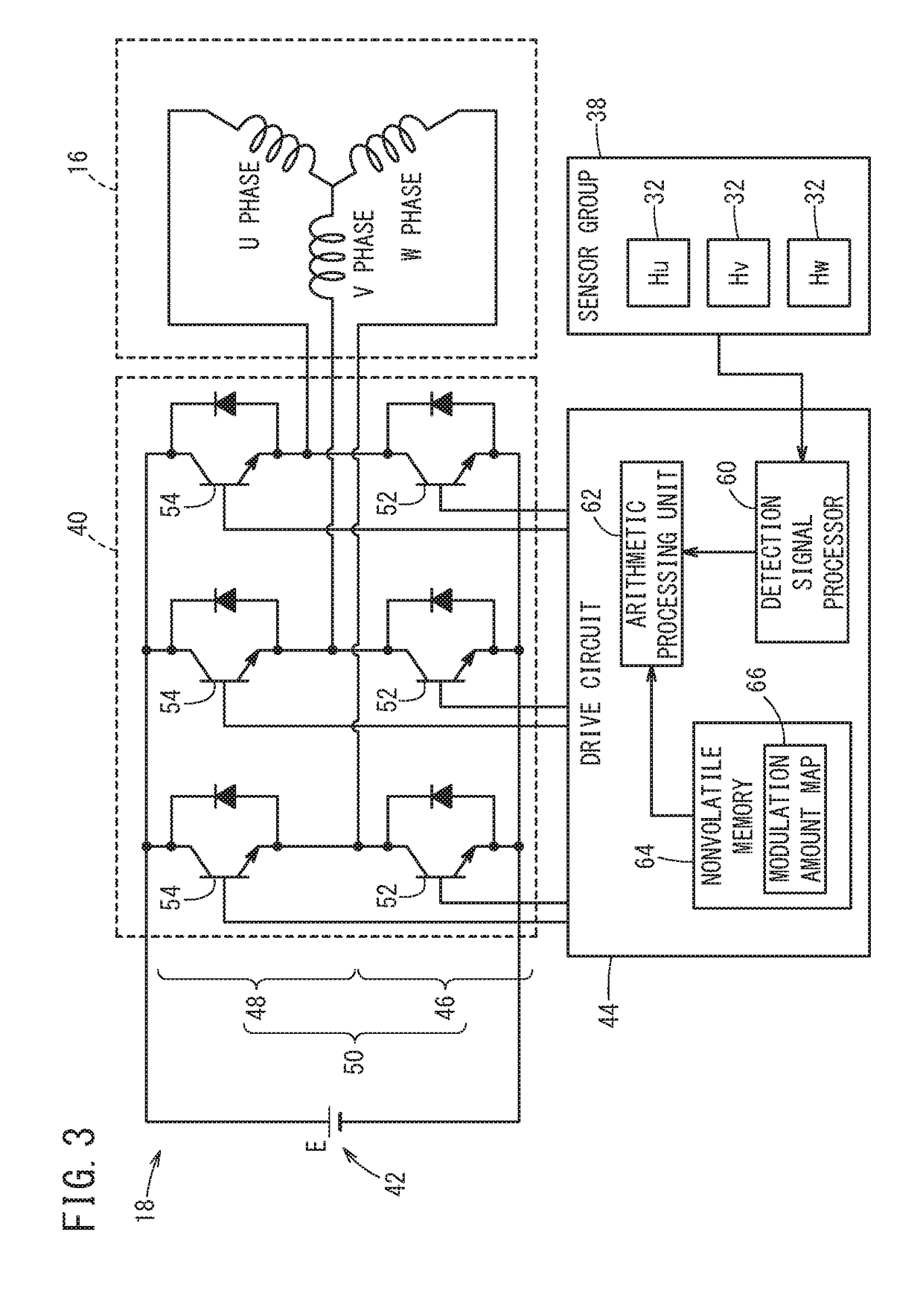Control device and control method of rotary electric machine
- Summary
- Abstract
- Description
- Claims
- Application Information
AI Technical Summary
Benefits of technology
Problems solved by technology
Method used
Image
Examples
Embodiment Construction
[0025]Hereinafter, a preferred embodiment of a control device of a rotary electric machine according to the present invention will be described with reference to the attached drawings in connection with a control method of the rotary electric machine.
[Application Example of Motor Control Device 18]
10>
[0026]FIG. 1 is a schematic plan view of an automated guided vehicle 10 into which a control device (here, a motor control device 18) of a rotary electric machine according to an embodiment of the present invention is incorporated. The automated guided vehicle 10 is an unmanned conveyance carrier (an automated guided vehicle), and supplies and conveys various items in a factory, including parts, products in process, or finished products.
[0027]Specifically, this automated guided vehicle 10 is configured to include a vehicle body 12, right and left wheels 14 and 14, right and left motors 16 and 16 (rotary electric machines), right and left motor control devices 18 and 18, an integrated el...
PUM
 Login to View More
Login to View More Abstract
Description
Claims
Application Information
 Login to View More
Login to View More - R&D
- Intellectual Property
- Life Sciences
- Materials
- Tech Scout
- Unparalleled Data Quality
- Higher Quality Content
- 60% Fewer Hallucinations
Browse by: Latest US Patents, China's latest patents, Technical Efficacy Thesaurus, Application Domain, Technology Topic, Popular Technical Reports.
© 2025 PatSnap. All rights reserved.Legal|Privacy policy|Modern Slavery Act Transparency Statement|Sitemap|About US| Contact US: help@patsnap.com



